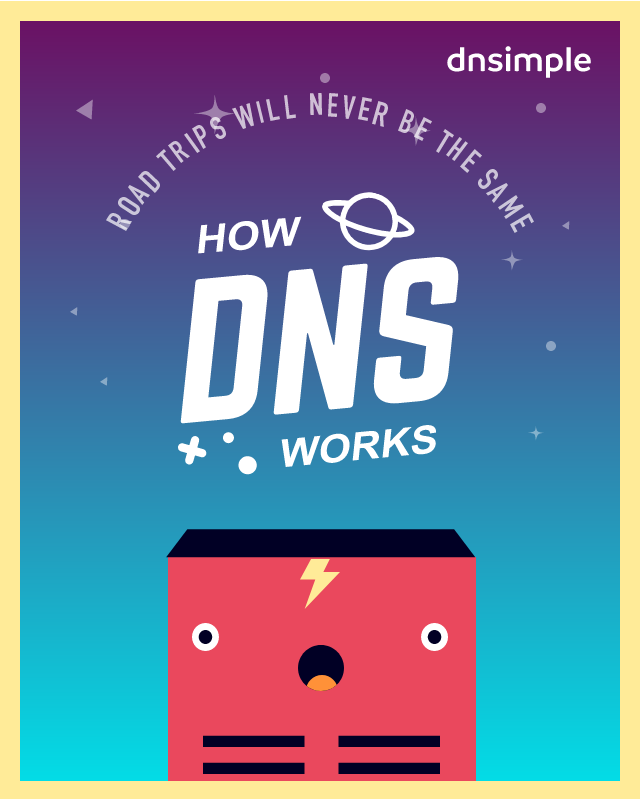Under the Hood - Domain Names
Posted on:
Domain names are the streets of the internet, and are a lot more flexible than people imagine. Today we're going under the hood to look at domain names.
A domain name is a shortcut for a whole bunch of information, and most of the time it will point a web browser at the server where your website is hosted. Depending on the commands you use, or how you get there, you will get a different response from the server, it might be your website, but a domain name contains information about your emails as well. For the purposes of this blog post though, we're just going to take a look at how it gets to your website.

Website:
www.mywebsitedomain.com or mywebsitedomain.com
Email:
There are many things a server connected to the internet can do, and the domain is the starting place for most people.

How Domains Work
From clicking on a link
If you want to visit a webpage, you will click on a link, or type in the address into a browser window. This is called the **URL (**Uniform Resource Locator). Your computer then changes the address into a series of numbers (called the IP Address, eg. 192.165.112.1231), and checks to see if your browser already has any information on that domain in the browser's cache (the saved files from webpages you've previously looked at). If there is nothing, the browser also checks your own operating system.
Searching for your information
The next place to check is at your ISP (Internet Service Provider). Your ISP not only gives you access to the internet, but it will have servers onsite that hold information on many common webpages. This saves time and data traffic if a website it being accessed a lot and the ISP will find it cheaper to host some of the information on their own site than downloading the same images multiple times a day. They have to pay for data too.
Checking caches and searching further
If your ISP cache does not have an answer, the request will go to the next highest authority, effectively, this is your request really stepping out into the internet, and where the full power of the domain becomes apparent.
The last part of your URL tells the internet where your domain comes from, for example, mywebsitedomain.com has a TLD (Top Level Domain) of .com while others you may have seen could have a TLD of .net, .gov or something different. In Australia, we also have our .com.au, .net.au and .gov.au, this lets users know that the website is based in or relates to Australia, and that information about the domain is probably going to be based in Australia.
While most websites will have a .com, .net or .gov (or country equivalent) TLD, there's a heap of other options. Did you know that you can find our website at a bunch of different domains with different TLDs, including aimhigherwebdesign.com.au, aimhigherweb.design and aimhigherweb.dev?
The highest authority in the (internet) land
The TLD information is stored in servers around the world, each of which are multiple physical servers (just like computers) functioning together and run by independent organisations. Your request will eventually make it's way to one of these servers, which will supply the name of the servers that host the webpage you wanted. These servers are the highest authority for information on domains.
An answer is provided
A minimum of two server names are provided to the root server when a Domain name is registered. This means that if the first server doesn't respond with your webpage, then the request will go to the second server. Often with a big internet service provider, there can be a several name servers. If all the named servers fail to respond, you will get an error message in your browser, such as the famous 404. If there are no problems, the root server will provide your request with a IP Address, which is the address for the server with the webpage.
Your request will now collect the files and information it needs, and provide you with your webpage. Each of the caches we've gone through already will also keep a copy of the files and information in case they are needed again (that way next time we don't have to go all the way back to the TLD servers). After a certain amount of time, these files will get deleted from the caches, but for a while they'll save time by grabbing them from there.
Why you need a domain name
A domain is an easy way to 'earmark' your space on the net. An easy to remember domain is a valuable resource during a conversation with a potential client, and fits better on a business card. It can even be used to showcase what you do.
Your web host will often include a domain name in your fees and charges, and you can also have multiple domains that all point to the same webpage. Talk to your host about getting domains similar to your original, including domains that might include popular typos to catch any customers that might make mistakes, for example if you type in gogle.com, it will still direct you to Google, as they have bought a lot of the domains similar to theirs.
Behind the magic
This is a very simplified version of how domains work, and we've skipped over a lot of what is going on behind the scenes. A lot of how browsers do this is using DNS (Domain Name System) records, which are incredibly powerful things that power the internet, and a lot of other things. For example, back in October, Facebook had issues with their DNS, and not only did Facebook and Instagram go down, but a lot of their internal systems including calendars and access to buildings relied on their DNS records and it stopped working as well!
If you'd like to know more about DNS and how it works, the team at DNSimple have put together a really great comic that explains the technical side a bit more.

